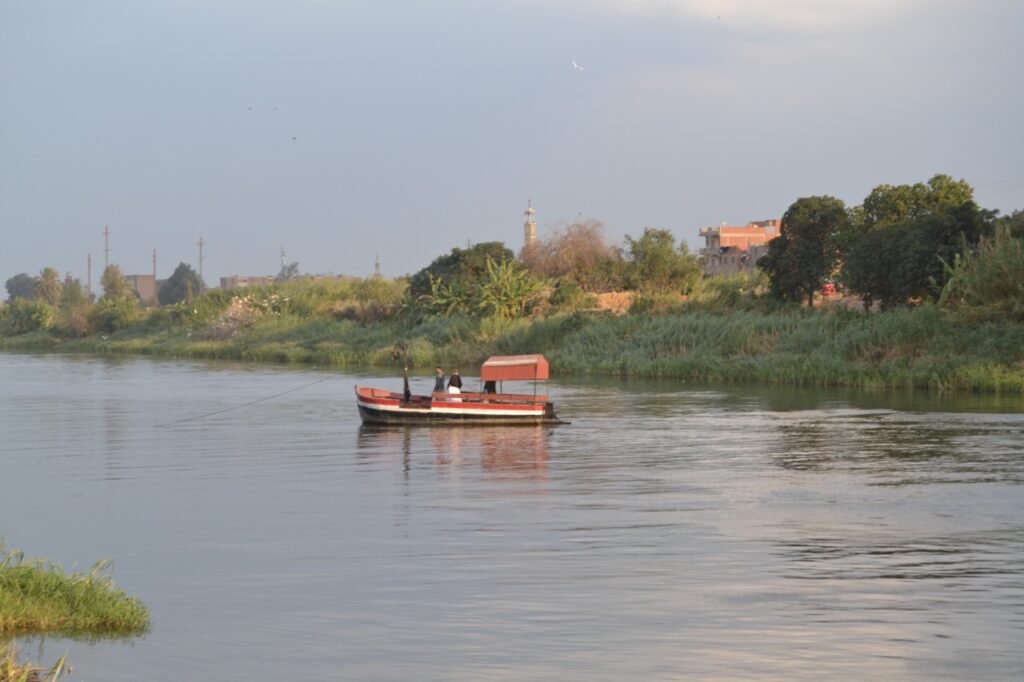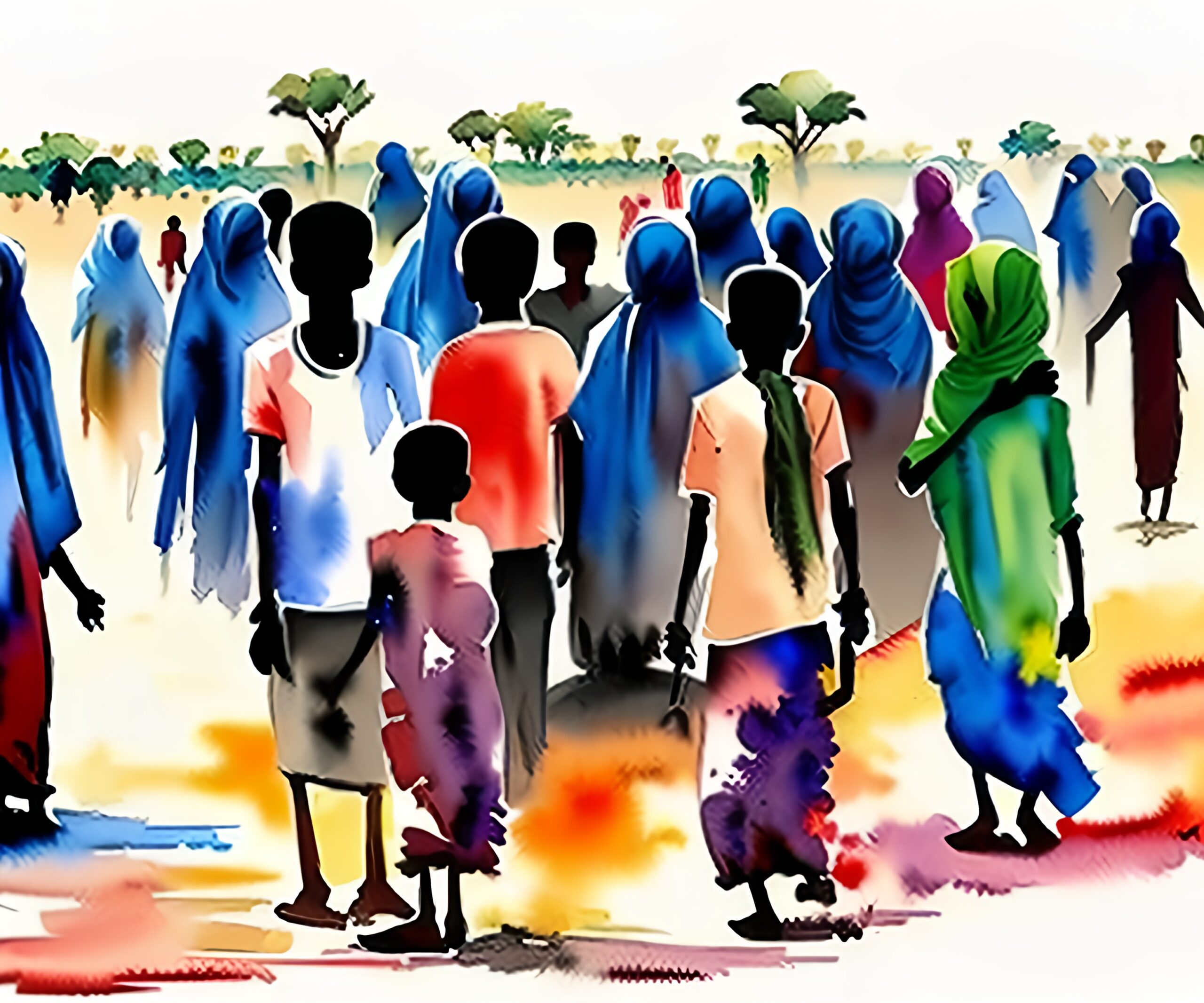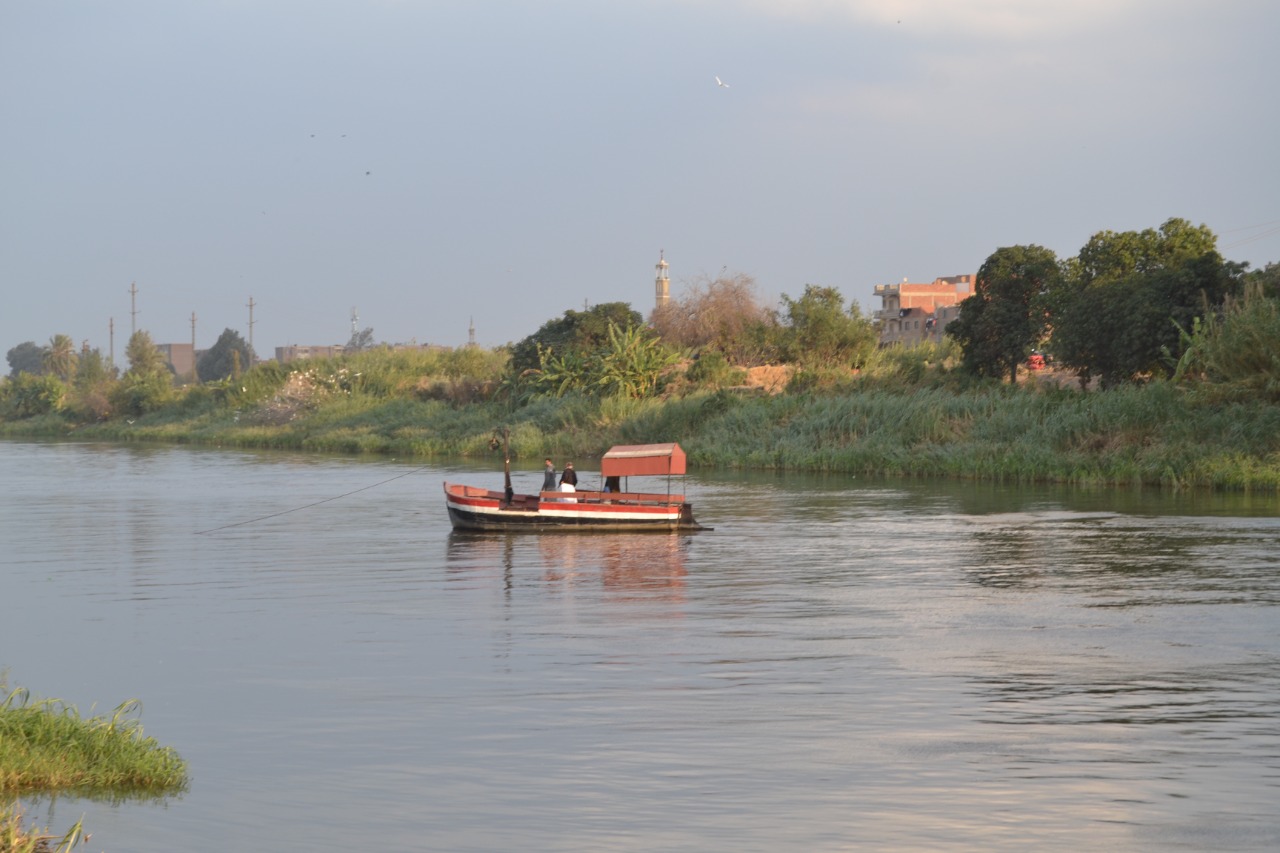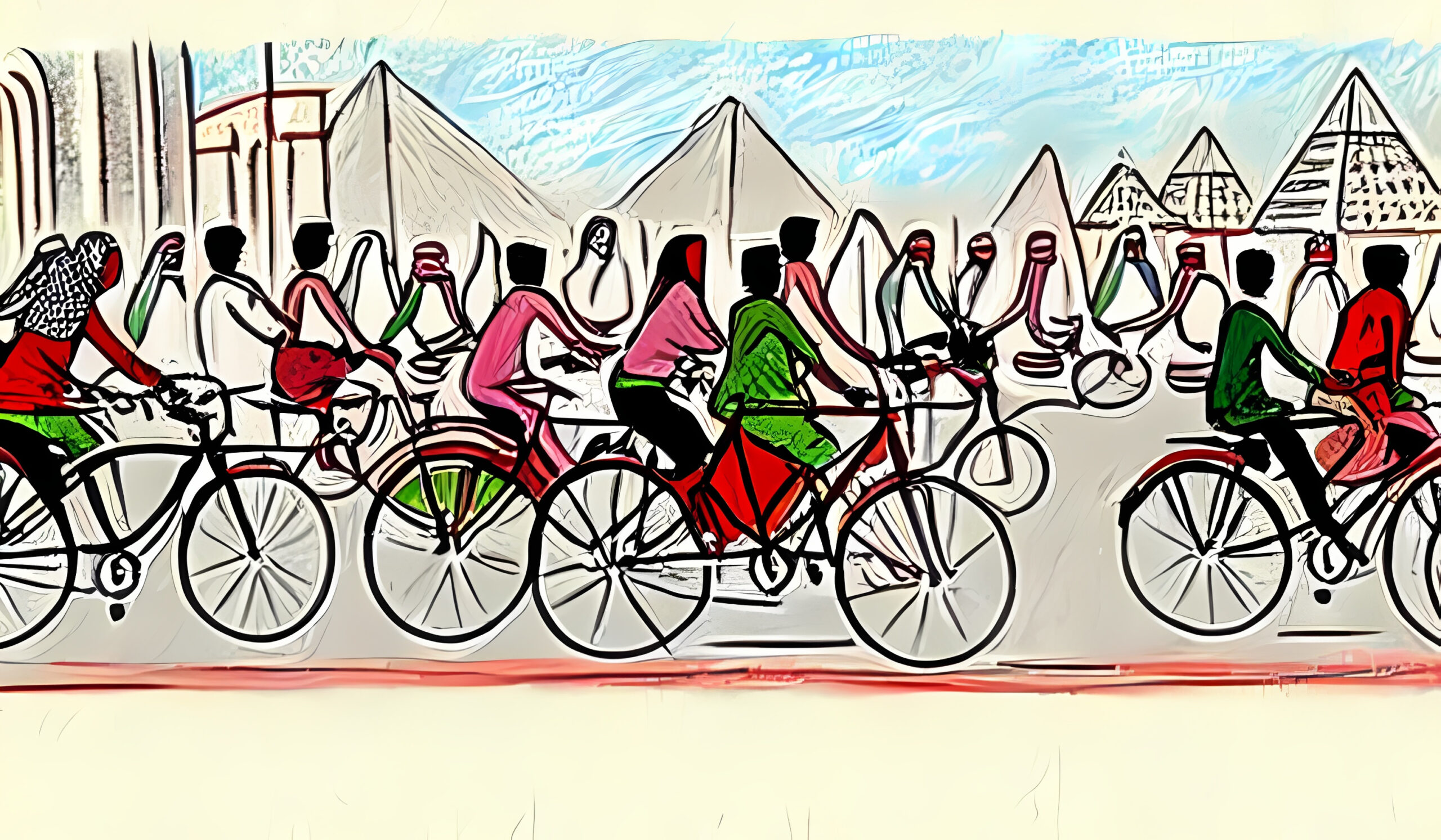Cairo
By Rabab Azam
In January of last year, Egyptians woke up to the incident of a car sinking from the top of an unlicensed river ferry, carrying 23 individuals from the Tafteesh village in Ashmoun, most of whom were children under the age of 15 at that time. They were laborers returning from their night shift at a poultry farm. The accident claimed the lives of two adults and eight children, sparking discussions about child labor in rural villages and the dangers of river ferries.
Incidents related to Nile ferries have recurred, and the families of the victims repeatedly held the government responsible, blaming its laxity in rescuing the victims and the negligence of the responsible authorities in enforcing inspections on boats/ Nile ferries. The river transport sector has experienced significant deterioration, and the Cairo government doesn’t specifically pay attention to the ferries; they are a means of fast and inexpensive transportation for the poor and the most needy, according to testimonies from some locals.
What’s the Story of Nile Ferries in Egypt?
In the year 2017, police forces stormed the Warraq Island, the largest of the Nile islands situated in the middle of the Nile in Cairo, following decisions to demolish homes under the pretext of encroaching on state-owned lands. This was the declared goal at the time, but later it became apparent to citizens that the purpose was to evacuate the island for investment in commercial and touristic projects. The forces crossed through the river ferries, which represent the only means for residents to travel to and from the island. The same ferries were used by the forces as a tool to exert pressure and control over the protests of the locals, after the ferries were suspended for days (the island originally had 5 main ferries connecting it to the mainland; the government later reduced it to 2 ferries operating only 6 hours a day). This raised additional incidental questions about the ferries as the sole means of transportation in most islands/interior areas along the length of the Nile in Egypt, which according to the official website of the State Information Service, number 144 islands (declared as nature reserves and inhabited by 3 million people), including 95 islands along the main course from Aswan to the Delta Barrages, 30 islands on the Rashid Branch, and 19 islands on the Damietta Branch. However, the geographical researcher Samia Mustafa stated in her study that the number of Nile islands within Egypt reaches 391 islands. Meanwhile, the Ministry of Irrigation announced in official statistics for the year 2022 that Egypt owns 526 river islands of varying sizes. Reports from the Nile Research Institute clarified that there are 128 islands, while the General Authority for Survey stated 181 islands, and the Land and Water Research Institute estimated them to be around 209 islands. This conflicting information might be attributed to the multiple entities responsible for these islands. The Cabinet issued its decision number 1969 in 1998, specifying only 144 islands. Some specialists suggest that the diverging counts of Nile islands might be due to the control of certain businessmen over some of them (like in parts of Nubia). Furthermore, 36 islands were allocated and their ownership was transferred to the armed forces last year (indicating, according to some estimates, a shift of conflict between the island residents and the government over the past two decades into a conflict with the military, which might tip the balance in favor of the regime this time).
Questions arose about the situation of the island residents, who find no means of transportation other than dilapidated rusty ferries or mostly privately owned small fishing boats. There is a near complete absence of responsible entities providing alternatives to these decrepit ferries, despite the danger they pose to the residents’ lives, as well as the tragic accidents that occur during crossings. These accidents have intensified dramatically in the past decade. Neglect, randomness, and deficiencies in sanitation, education, drinking water, and security services seem to have been intentionally allowed to persist since the time of former President Mubarak. The ferries are not only used as transportation for the residents of the Nile islands, but also in the adjacent areas along the Nile and its branches, saving time and expenses.
Recurring Incidents
The incident of the Warraq ferry in July of 2015, which claimed the lives of 36 citizens, including 20 children, was the most tragic catastrophe in recent river ferry accidents. Official reports clarified that the ferry was overloaded beyond its capacity and was not licensed by the River Transport Authority. However, at the time, the officials disassociated themselves from the incident. The head of the Warraq district attributed the responsibility for licensing to the Water Police, while the Ministry of Irrigation stated that its responsibility was limited to establishing Nile docks, and that permits for operating river units were a shared responsibility involving a committee comprised of representatives from 9 ministries and various authorities.
The accidents have recurred since the departure of the Mubarak government. In 2011, 10 individuals died in a ferry sinking in Aswan, followed by another tragedy where 30 individuals drowned in a Nile ferry accident in Beni Suef. In the following year, 6 people lost their lives due to the sinking of a Nile ferry carrying 19 passengers. In 2013, a ferry carrying 12 schoolchildren capsized in the south of Qena governorate. That same year, a person drowned in an agricultural tractor accident on a ferry in Minya. In the same year, 3 individuals lost their lives in the sinking of a ferry in Giza. In 2014, 50 passengers fell from a ferry in Beni Suef, and in Sohag, a ferry captain drowned. In the same year, 23 individuals drowned while crossing the Nile to attend a funeral in Minya. In 2015, a Nile ferry sank in Qena, and in the same year, 12 people drowned while crossing the river to attend a wedding celebration on Warraq Island in Cairo. In 2016, 15 individuals died in a ferry sinking in Kafr El Sheikh. In 2020, 10 people drowned in a ferry in Beheira. In the current year, two people drowned in Minya.
According to an official report, there have been 15 ferry incidents in the past 15 years, from 2007 to 2020, with an average of one incident per year, resulting in the deaths of at least 180 individuals (it should be noted that by examining headlines from newspapers in the past decade alone, it becomes apparent that the number of incidents is higher than the officially mentioned count, but there is no precise official/unofficial statistic for this). The “Dafater Ahwal” Center for Research, Archives, and Documentation has documented around 78 domestic water transport accidents in Egypt between 2011 and 2016, resulting in 83 deaths due to ferries alone. The number of ferries in Egypt is estimated to be around 9,500, with over 45 percent of them being unlicensed and not meeting standard specifications. Additionally, 70 percent of their sailors do not hold licenses for their profession, according to the Center for Economic Studies.
Official Efforts
In the year 2020, President Sisi directed the establishment of overhead bridges as alternatives to Nile ferries in villages with populations exceeding 10,000 residents. This initiative aimed to eliminate the use of ferries by locals, while serving developmental projects and new urban communities. The administration proposed the concept of Nile corridors as national projects, with distances not exceeding 25 kilometers between them. With Upper Egypt being put on the investment map, responsible authorities have initiated the construction of new Nile corridors and tunnels to align with the goals of the political leadership.
According to a recent official statement, the total number of Nile corridors by the end of last year reached 51, including 13 completed corridors during the period from 2014 to 2023. An additional 21 new corridors are currently under construction, with 13 of them in Upper Egypt at a total cost of 19 billion Egyptian pounds. Three of these have been completed near the cities of Beni Mazar, Tama, and Girga, while work is ongoing on 9 others, including Adli Mansour, Samalout, Qous, Kalabsha, Derau, Badil Khazan Aswan, Fashn, and Abu Teeg. Furthermore, 5 corridors are scheduled for implementation after the year 2024, including Dashur/Al-Wasat, Fashn/Beni Mazar, Minya/Mallawi, Luxor/Esna, and Edfo/Kalabsha.
Regarding the Delta corridors, 5 have been completed: Tanta, Benha, Al-Khattabah, Tahya Masr, and Helwan. Another 4 are currently under construction: Tala, Abu Ghaleb, Samannoud, and Shubrakhit. This brings the total number of Nile corridors to 72 by the year 2030.
In terms of legislative measures, Law No. 167 of 2022 was issued to reorganize the River Transport Authority. As per the new amendments, the authority replaces the specialized internal navigation administrations in the provinces for issuing river navigation licenses, in coordination with the Ministries of Defense, Interior, Agriculture and Land Reclamation, Finance, Local Development, Water Resources and Irrigation, Planning and Economic Development, Social Solidarity, International Cooperation, Investment, Tourism and Antiquities, as well as the Central Agency for Organization and Administration and the Egyptian Ambulance Authority. This approach has raised criticism from some experts, particularly due to the potential overlap of authorities after involving multiple entities in the coordination processes.
The law has also introduced new fees, including examination fees for various river units, including ferries, ranging from 700 to 10,000 Egyptian pounds. There is also an annual load fee, at a rate of one Egyptian pound per ton of dimensional/weight load confirmed by the unit’s license, along with several other mandatory newly established fees. The law stipulates that violations would result in imprisonment for a term not exceeding one year, and a fine not less than 20,000 Egyptian pounds and not exceeding 50,000 Egyptian pounds, or one of these two penalties, for anyone who operates a public ferry or route without obtaining a license.
What’s Next?
Mahmoud still waits every morning for the ferry of his village to cross to the other bank where he works at Menoufia University. He told us that executive bodies had contacted the village mayor to inform him about the future construction of a bridge over the Nile. This was three years ago, yet nothing has been implemented so far. He and his neighbors continue to wait for the dilapidated ferry that locals have been using for over thirty years, paying three Egyptian pounds for the crossing.
As for Hind, she prefers the Helwan ferry in southern Cairo despite road improvements to and from Helwan district. She stated to the Zawia3, that “Using the land route would cost her a minimum of 40 Egyptian pounds daily and additional time that could surpass an hour.”
Experts observe that ferry accidents persist despite the government’s development plan. They agree that most ferries in villages and districts are informal and unlicensed. These ferries do not meet the required standards and technical specifications, such as providing life jackets that match the number of passengers, fire extinguishers, and other tools and measures that ensure safe navigation on the river. Additionally, boatmen and workers often lack the necessary training to prevent accidents. According to the Economic Studies Center, around 3,000 worn-out boats and ferries are still operational and could sink at any moment.
Economic expert Adel Amer pointed out in his study that the real problem emerged in the early 1980s when water scarcity, decreased draft, and reduced investments for fleet renewal and development surfaced. There are also factors affecting the capacity of waterways, including geographical characteristics such as the width of the safe navigation channel, the shape and nature of the bottom, places prone to siltation, and the severity of bends if present. Hydrography, involving the intensity and direction of water currents, water eddies, and variations in water depth, also plays a role. Moreover, weather effects and reduced visibility at times contribute to the challenges.
One of the biggest issues facing ferry operators is the absence of proper river moorings, which exposes ferries to collisions or grounding.
Some fishermen from Delta provinces agree with the study’s findings and emphasize that building bridges alone will not solve the problem, especially since the use of ferries and boats is a necessary and cost-effective means for millions of Egyptians in villages and impoverished areas adjacent to the river. They question: What will happen to villages with populations not exceeding 10,000 residents? Especially since directives call for the construction of bridges over the Nile only for villages with populations exceeding 10,000.
Despite the government’s declared efforts and attempts to develop the river transport sector, small ferries in particular are still sinking, and Egyptians continue to die while crossing the river. When will the catastrophe come to an end?







